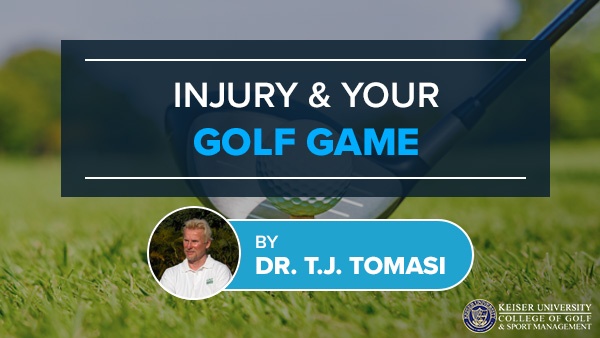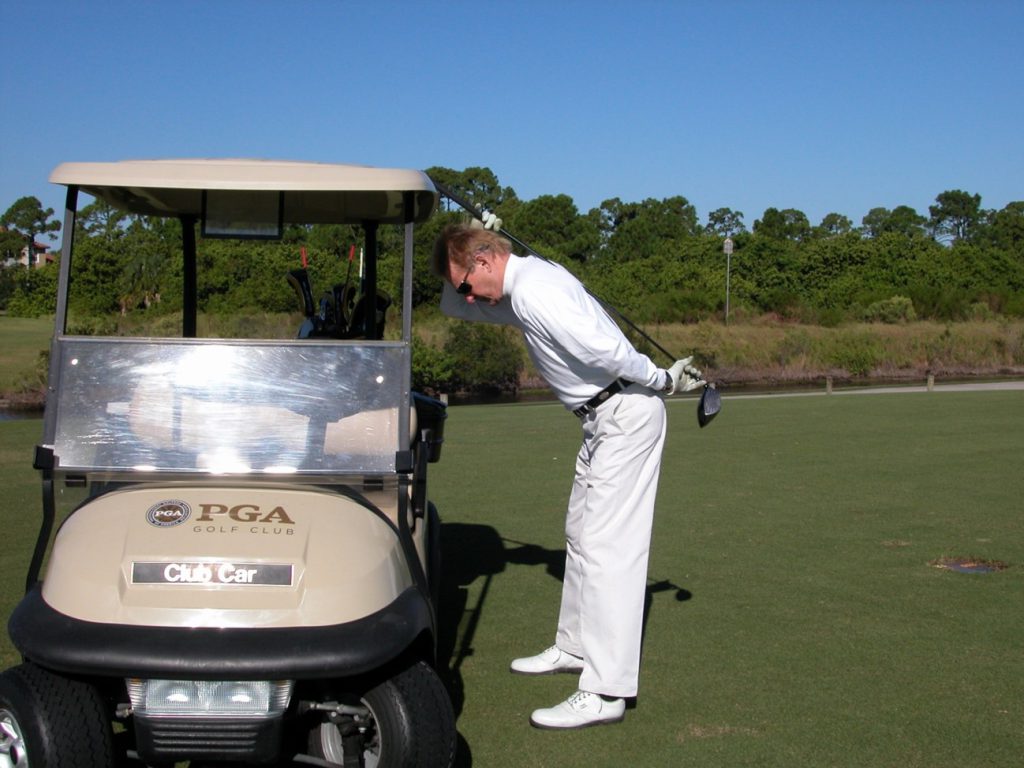Injury and Your Golf Game

By Dr. T. J. Tomasi, Keiser University College of Golf Senior Faculty and Director of Research
Of the approximately 26 million people who play golf in the US, 25% are over 65, an age group with more golf injuries than any other human age group. Damaged wrists, hands, elbows, and shoulders are common, but lower back injuries are most common for golfers.
According to Dr. Bill Mallon of Duke University, low back injuries are the most common for male golf professionals, whereas wrist and hand injuries predominate for female golf professionals.
For both pro and amateur groups, there are two types of injuries – one type is caused by a specific traumatic event like hitting a root at impact or lifting clubs out of the trunk of your car. These can often be avoided using common sense, e.g., check for roots and bend your knees when you lift. The other type is a repetitive injury where your back muscles spasm or a disc herniates over time. In this case, damage to the body results from small-scale repetitive traumas that add up incrementally over the months and years. When there is no apparent precipitating event, you can assume the cause of your physical problem is repetition — minor injuries that are repeated turn into a big injury event that often requires shutdown.
What can you do to prevent repetitive traumas from eventually ruining your golf? Here are several things you can do without changing your swing:
- Warm-up stretches before the round and cool-down stretches after play – see YouTube for guidance.
- Walk whenever you can.
- Use a pillow for your back in the golf cart because most are poorly designed and lend themselves to bad backs.
- Use a rubber suction cup on the end of your putter to pick your ball out of the cup. This eliminates awkward bending.
- Use special shaft-dampening technology to lessen shaft vibrations at impact.
- Use a long putter so you don’t strain your spine when you practice putting.
- Push your walking cart vs. pulling it.
- Exercise using flexibility and strengthening exercises devoid of heavyweights 3-5 times a week.
- Practice your short game but keep full swing practice sessions to a minimum to reduce the amount of repetition damage. The less stress you put on your muscles and joints, the longer they last.

Another way to use your golf cart is before and during the round.
If you’d like to study with Dr. Tomasi and other PGA Master Professionals, contact The College of Golf today.














